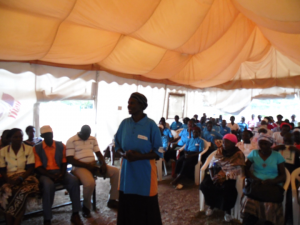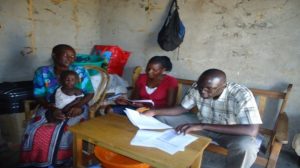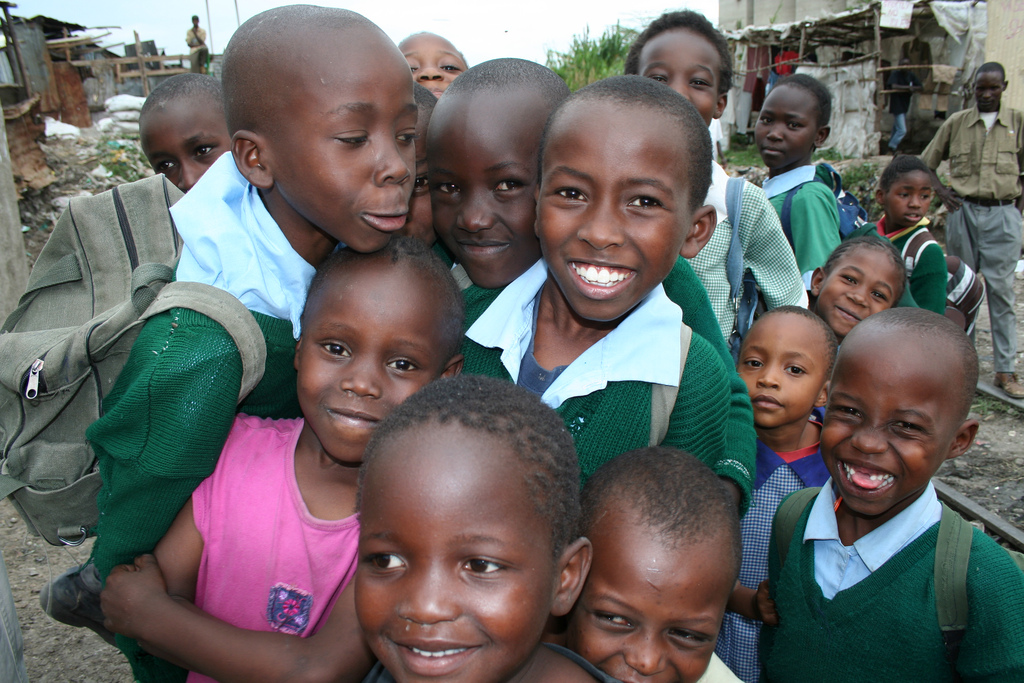This post originally appeared on the CHW Central website.
Victoria Achieng has been a community health volunteer (CHV) for more than seven years in Nyaguda village in Bondo, a sub county of western Kenya. Until recently, her primary role was to promote appropriate health behavior, collect basic data on access to safe water, hygiene and sanitation facilities and record and report occurrences of illness in her community. Now, after participating in a program designed to expand the CHV’s role, Victoria can treat children under five.
When first presented with the opportunity to participate in this program, Victoria had some reservations: “Providing treatment was not part of our work,” she confesses, “so it was threatening to be told that we will be part of a program of training CHVs to treat sick children.” She was unsure she would be capable of diagnosing a child and providing treatment, a job performed by nurses at the dispensary or health center. Victoria was used to giving health talks and advising caregivers to take sick children to the health center; she felt comfortable in her role. However, she was frustrated that caregivers refused to go to health centers due to cost and lack of child care, and agreed to join the program.
Victoria participated in a certification program in integrated community case management (iCCM), during which she was trained and supported by Community Health Extension Workers (CHEWs), nurses and project staff from the USAID maternal and child health flagship programs, Maternal and Child Health Integrated Program/Maternal and Child Survival Program (MCHIP/MCSP). MCSP implemented a feasibility study on iCCM, leveraging the existing community health platform in Bondo Sub County, Siaya, Kenya from January 2014 to June 2016. The study was designed to contribute to local evidence on the feasibility of implementing iCCM in Kenya, as required by the Ministry of Health before formally adopting iCCM as a national strategy for reaching children underserved by facility-based services.
Victoria was among 58 CHVs trained in Bondo Sub County by government nurses and clinical officers in the iCCM algorithm. The training focused on the assessment, classification and appropriate treatment for diarrhea and malaria, as well as the assessment and identification of children with suspected pneumonia and malnutrition for referral to the dispensary or health center. To be iCCM-certified, CHVs are “attached” to work under the supervision of a nurse or clinical officer trained in iCCM at a dispensary to mentor them in skills to assess, classify and treat conditions included in the iCCM package. This mentoring relationship with the MCSP staff, nurses, and CHEWs motivated Victoria and the other CHVs. CHVs work under supervision until they are able to successfully and consecutively manage at least six sick children. It takes, on average, four to six weeks for a CHV to complete certification.
Throughout and after the initial training, MCSP supported the newly iCCM-certified CHVs with supplies, visits and tools. After the initial CHV training, MCSP and the Ministry of Health provided basic CHV start-up kits containing Vitamin A, deworming tablets, condoms, torches, registers and health promotion materials. After a trained CHV becomes iCCM-certified, they receive iCCM materials, including mid-upper arm circumference (MUAC) tape, respiratory timers, and first-line drugs including oral rehydration salt sachets, zinc, malaria rapid diagnostic tests, and artemisin combination therapy from their health facility.
MCSP also supported the Sub County Health Management Team (SHMT) by conducting monthly supervision and performance monitoring visits to the CHVs, collecting service data and holding monthly meetings to review the data and agree on corrective measures where services were not being delivered according to expected performance standards. The SHMT also provided iCCM monitoring and reporting tools, including sick child recording forms, to the CHVs. Further, the MCSP project staff supported the SHMT in the collection, analysis and reporting of iCCM service data.
The SHMT then successfully collaborated with chiefs and religious leaders to mobilize people to attend community dialogue days. At these events, community health committee (CHC) members presented community data from CHVs to create a common understanding of children’s health issues. CHCs deliberated on the data with community members and promoted adoption of preventative actions and care seeking behaviors. Finally, as required by the Kenya National Community Health Policy, CHVs received a monthly stipend of US $23. The stipend, initially paid by MCSP, became the responsibility of the county government for the last six months of the program.

When initially presented with this training opportunity, Victoria was excited, but also worried that she would not be able to meet expectations. Eighteen months later she is beaming. Now a certified provider of iCCM of childhood illness, Victoria is able to provide diarrhea and malaria-related care to sick children. Reflecting on her experience, Victoria says, “When I was discouraged and wanted to quit, they encouraged and mentored me until I was confident in assessing and treating sick children. Learning to do the rapid diagnostic test for malaria was very intimidating.” However, she is now very confident in testing and interpreting the results.
Victoria notes that providing treatment in the community has also made caregivers more responsive to health education messages on improving household practices related to hygiene and sanitation, using long-lasting insecticide treated bed nets, and taking children with complications and non-iCCM conditions to the health centers. “Before I was trained in iCCM, I used to give health education but mothers complained about the lack of medicines to treat sick children and the long distance to the dispensary…iCCM improved my relationship with caregivers,” she adds, as Victoria can treat children in their villages. Additionally, Victoria believes that her services have decreased child deaths in the community; her observation was corroborated by a village chief, who noted that the number of families requesting burial permits has declined.

Although trained and competent, CHVs providing iCCM still face several challenges. “Although it feels good to be the ‘doctor in my village’, I have to remember that I don’t know about some diseases and encourage community members to go the dispensary,” notes Victoria. She and other iCCM-trained CHVs provide treatments for only a few conditions, including diarrhea and malaria, and must refer children with suspected pneumonia and malnutrition to the health center. When challenged by mothers regarding why she cannot treat more conditions, Victoria patiently explains that she is trained to treat the most common killers of children in the area. Further, her training enables her to only treat children under five because they have a greater risk of dying if they do not get treatment immediately. This forces frustrated mothers to travel, sometimes great distances, to the dispensary or health center for their older children.
According to the feasibility study, the iCCM training program in childhood illness appears to successfully train CHVs to treat under-five illnesses like diarrhea and malaria. The July 2015 endline assessment illustrates that trained CHVs, like Victoria, are a great resource to communities and can effectively increase access to and timely use of treatment for childhood illness. It also demonstrates that training CHVs on providing treatment increases CHVs’ effectiveness as health promoters since they are trusted more by caregivers of children under five years of age. By the end of the study, Siaya County supported scale-up of iCCM in Bondo Sub County. As a result, all CHVs in the sub county have been trained and are providing iCCM, increasing access to and encouraging timely use of treatment services for diarrhea and malaria and timely referral of suspected pneumonia and malnutrition.

